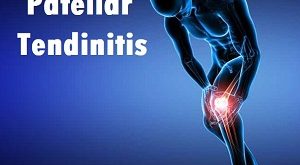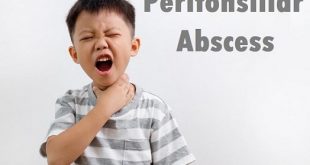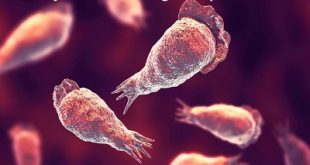What is Primary Biliary Cholangitis (PBC)?
Primary biliary cholangitis (PBC), formerly known as primary biliary cirrhosis, is a disease that harms the liver’s ability to function. It is chronic, which means it lasts for a long time or regularly comes back.
In people with PBC, the bile ducts become injured, then inflamed, and eventually permanently damaged. The bile ducts are small tubes in the liver that carry bile (a substance needed to digest food) from the liver to other parts of the digestive system.
When the bile ducts don’t work, bile builds up in the liver. This buildup can cause scarring in the liver (cirrhosis). Cirrhosis makes it hard for the liver to function properly. PBC is progressive, meaning it gets worse over time. If it is not treated, cirrhosis can cause liver failure and even death.
What are the stages?
PBC has four stages. They’re based on how much damage has been done to the liver.
- Stage 1. There’s inflammation and damage to the walls of medium-sized bile ducts.
- Stage 2. There’s blockage of the small bile ducts.
- Stage 3. This stage marks the beginning of scarring.
- Stage 4. Cirrhosis has developed. This is permanent, severe scarring and damage to the liver.
Pathophysiology
The exact mechanism of the liver damage is unknown, although evidence indicates that it can be of autoimmune origin. The data supporting this hypothesis are as follows: (1) abnormalities of the humoral and cellular immune systems (ie, elevated serum levels of immunoglobulins, mainly immunoglobulin M [IgM]), (2) multiple circulating autoantibodies, (3) granulomas in the liver and regional lymph nodes, (4) impaired regulation of both B and T lymphocytes, and (5) the association of this disease with a variety of autoimmune-mediated diseases (eg, autoimmune thyroiditis; keratoconjunctivitis sicca; scleroderma; calcinosis cutis, Raynaud phenomenon, esophageal motility disorder, sclerodactyly, and telangiectasia [CREST] syndrome).
A continuous destruction of small and medium bile ducts occurs, which is mediated by activated CD4 and CD8 lymphocytes. As a result, chronic cholestasis is the prominent clinical and laboratory finding. Once destroyed, it is well established that regeneration of bile ducts is either not possible or inefficient.
Subsequent to the loss of the intrahepatic bile ducts, a disruption of the normal bile flow occurs with retention and deposition of toxic substances, which are normally excreted into bile. The retention of toxic substances, such as bile acids and copper, can cause a further secondary destruction of the bile ducts and the hepatocytes. In addition, increased expression of the HLA class II antigens in the liver occurs, rendering the hepatocytes and bile duct epithelial cells more susceptible to activated T lymphocytes and perhaps exacerbating immunologically mediated cytotoxicity. An association has been suggested between primary biliary cholangitis and haplotype HLA-DR8 and, for some populations, HLA-DPB1.
In a controlled, interview-based study of 1032 patients, Gershwin et al noted that in genetically susceptible persons, environmental factors, including chemicals found in cigarette smoke and infectious agents introduced through urinary tract infections, may induce primary biliary cholangitis. The authors stated that exogenous estrogens may also contribute to the disease’s development and that this may help to explain why the disease occurs more frequently in females than in males.
What causes Primary Biliary Cholangitis (PBC)?
Doctors do not know for certain what causes PBC. Some experts believe it may be related to a problem with the immune system, where the immune system attacks healthy cells in the body. In PBC, doctors believe the immune system damages the bile ducts.
While there is not a known cause, some people with PBC also have other related autoimmune diseases. These conditions include autoimmune hepatitis, thyroid diseases, scleroderma, Raynaud’s diseases, Sjogren’s syndrome and celiac disease. Frequent urinary tract infections are also often seen in patients with PBC. In addition, infections, smoking and exposure to certain chemicals may play a role in triggering PBC.
PBC also tends to occur more commonly among family members. If one member of a family has PBC, the other family members are at an increased risk.
Who is at risk for Primary Biliary Cholangitis?
- Women are nine times more likely than men to develop PBC, meaning that women make up about 90% of PBC cases.
- The disease most often develops during middle age and is usually diagnosed in people between the ages of 35 to 60 years.
- There appears to be a genetic component to developing PBC, as it’s more common among siblings and in families where one member has been affected.
Symptoms of Primary Biliary Cholangitis
More than half the people with primary biliary cholangitis do not have any noticeable symptoms when diagnosed. The disease may be diagnosed when blood tests are done for other reasons, such as routine testing. Symptoms eventually develop over the next 5 to 20 years. Those who do have symptoms at diagnosis typically have poorer outcomes.
Common early symptoms include:
- Fatigue
- Itchy skin
Later signs and symptoms may include:
- Dry eyes and mouth
- Pain in the upper right abdomen
- Swelling of the spleen (splenomegaly)
- Bone, muscle or joint (musculoskeletal) pain
- Swollen feet and ankles (edema)
- Buildup of fluid in the abdomen due to liver failure (ascites)
- Fatty deposits (xanthomas) on the skin around the eyes, eyelids or in the creases of the palms, soles, elbows or knees
- Yellowing of the skin and eyes (jaundice)
- Darkening of the skin that’s not related to sun exposure (hyperpigmentation)
- Weak and brittle bones (osteoporosis), which can lead to fractures
- High cholesterol
- Diarrhea, which may include greasy stools (steatorrhea)
- Underactive thyroid (hypothyroidism)
- Weight loss
Complications of PBC
If PBC is not treated or reaches an advanced stage, there may be other problems including:
- Osteoporosis – a condition in which the bones become weak and brittle
- Portal hypertension – increased blood pressure inside the blood vessels in your abdomen
- Ascites – a build-up of fluid in your abdomen (stomach) and around your intestines
- Vitamin deficiencies – including vitamins A, D, E and K
- A slightly increased risk of developing liver cancer
Diagnosis
Your doctor will ask you about your health history and your family’s health history, and perform a physical exam.
The following tests and procedures may be used to diagnose primary biliary cholangitis.
Blood tests:
- Liver tests. These blood tests check the levels of enzymes that may signal liver disease and bile duct injury.
- Antibody tests for signs of autoimmune disease. Blood tests may be done to check for anti-mitochondrial antibodies (AMAs). These substances almost never occur in people without the disease, even if they have other liver disorders. Therefore, a positive AMA test is considered a very reliable sign of the disease. However, a small number of people with primary biliary cirrhosis don’t have AMAs.
- Cholesterol test. More than half the people with primary biliary cholangitis have extreme increases in blood fats (lipids), including total cholesterol level.
Imaging tests may not be needed. However, they may help your doctor confirm a diagnosis or rule out other conditions with similar signs and symptoms. Imaging tests looking at the liver and bile ducts may include:
- Ultrasound. Ultrasound uses high-frequency sound waves to produce images of structures inside your body.
- FibroScan. Using an ultrasound-like probe, this test can detect scarring of the liver.
- Magnetic resonance cholangiopancreatography (MRCP). This special magnetic resonance imaging (MRI) exam creates detailed images of your organs and bile ducts.
- Magnetic resonance elastography (MRE). MRI is combined with sound waves to create a visual map (elastogram) of internal organs. The test is used to detect hardening of your liver (fibrosis) that might be a sign of cirrhosis.
If the diagnosis is still uncertain, your doctor may perform a liver biopsy. A small sample of liver tissue is removed through a small incision using a thin needle. It’s examined in a laboratory, either to confirm the diagnosis or to determine the extent (stage) of the disease.
Primary Biliary Cirrhosis: Treatment
There’s no cure yet for primary biliary cholangitis, a long-term liver disease. But there are ways to slow its progress and help ease your symptoms.
Medications
The main drug used to treat the disease is ursodeoxycholic acid, or UDCA. Your doctor might also call it ursodiol. It’s a natural bile acid that helps move bile out of your liver and into your small intestine.
UDCA will probably be the first treatment your doctor suggests. It can do a lot of good if you start it early on. If your doctor prescribes it, you may have to take it every day for the rest of your life. It slows liver damage and may make it less likely that you’ll need a transplant. You might notice side effects like weight gain, diarrhea, and hair loss.
If UDCA alone doesn’t help, or if you can’t handle its side effects, your doctor may recommend obeticholic acid (Ocaliva). You might take it alone or along with UDCA. It boosts bile flow and eases how much bile acid your liver makes. Side effects might include itchy skin, belly pain, achy joints, and a sore throat.
Treating Symptoms
There are ways to help ease the discomfort.
- Itchy skin: This common symptom may also be the most annoying. It can be mild or so severe that it bothers you day and night. If it isn’t too bad, try over-the-counter antihistamines that contain diphenhydramine. They can make you sleepy, so you might try them if itching keeps you awake at night. If they don’t help, your doctor can prescribe something else like cholestyramine (Locholest, Prevalite, Questran), naltrexone (Revia, Vivtrol), rifampin (Rifadin, Rimactane), and sertraline (Zoloft).
- Dry eyes and mouth: Start with over-the-counter artificial tears. If they don’t work, see your eye doctor for prescription drops. You can also find saliva substitutes to help with a dry mouth. Prescription options are available if they don’t do the trick. You can also suck on hard candy or chew gum to help with dry mouth.
- Fatigue: PBC can make you tired all the time. But your daily habits, other medical conditions, and even drugs you take can make it worse. Work with your doctor to take care of those issues, and you might ease your fatigue. A drug called modafinil (Provigil) might help.
Liver Transplant
Treatments usually keep primary biliary cholangitis from getting worse. If they don’t, your liver could start to fail. If that happens, your doctor will discuss a liver transplant. In this surgery, your liver is removed and replaced with a healthy, donated liver. PBC can return even after a liver transplant. But it might take years.
Lifestyle Changes
Medication is the main way to treat primary biliary cholangitis. Your doctor will work with you to find the best drug treatment plan. But you can also make simple changes in your daily life that will help ease your symptoms.
Eat a healthy diet
What you put in your mouth matters when you have primary biliary cholangitis. Your body can’t absorb vitamins and minerals the way it’s supposed to, so you may not be getting the nutrients you need. The disease can change your metabolism, too, so you may be eating less because you just don’t feel hungry.
Your doctor can suggest a healthy meal plan. It’s smart to eat a balanced diet rich in fresh fruits, vegetables, and whole grains. If you still can’t get enough nutrients and calories, your doctor may prescribe a liquid supplement. These nutritional drinks give you the vitamins you need.
Other diet tips to consider:
- Watch your salt. Choose low-salt and no-salt foods when possible. Too much salt can cause swelling.
- Go low-fat. Watch the fat in your diet, especially if you aren’t at your ideal weight or have fatty liver.
- Drink up.Water, that is. If swelling is a problem, ask your doctor if you should drink less.
- Cut back on booze. If you drink alcohol, you should stop or at least cut back. It’s your liver’s job to process what you drink. Drinking can make your already damaged liver work even harder.
- Skip raw shellfish. It can be home to bacteria that could cause a serious infection. Primary biliary cholangitis affects your immune system, so you’re more likely to get this kind of infection.
Other lifestyle changes
These steps can also help you feel better:
- Get some kind of exercise every day. Walking and swimming are good ways to strengthen your bones and fight osteoporosis, which often comes with PBC. Plus even a light workout can boost your mood and make you feel less tired.
- Take care of your skin. It may get itchy or look darker. Good skin care will help.
- Ease your stress. It can make many symptoms worse, including fatigue.
- Go to the dentist. The dry mouth that comes with PBC can raise your odds of problems like tooth decay. Your dentist can catch issues early on.
- Stop smoking. If you smoke, quit. Studies show that it can trigger the disease or make it worse.
Can Primary Biliary Cholangitis (PBC) be prevented?
Because doctors do not know the cause of PBC, it cannot be prevented. However, you can take steps to lessen liver damage, including:
- Quit smoking, stop drinking alcohol and stop using illegal drugs
- Take all medicines as directed by your doctor.
- Eat a healthy, well balanced diet.
- Get regular exercise, such as walking.
Healthy food choices could include eating foods rich in vitamins A, D, E and K and/or supplements of these vitamins. Also, foods high in vitamin D and calcium could help prevent osteoporosis. Ask your doctor for specific foods high in these vitamins and minerals.
Foods to avoid include raw shellfish (because of possible bacteria presence); plus food high in salt, fat, and carbohydrates – especially added sugars.
 Diseases Treatments Dictionary This is complete solution to read all diseases treatments Which covers Prevention, Causes, Symptoms, Medical Terms, Drugs, Prescription, Natural Remedies with cures and Treatments. Most of the common diseases were listed in names, split with categories.
Diseases Treatments Dictionary This is complete solution to read all diseases treatments Which covers Prevention, Causes, Symptoms, Medical Terms, Drugs, Prescription, Natural Remedies with cures and Treatments. Most of the common diseases were listed in names, split with categories.







